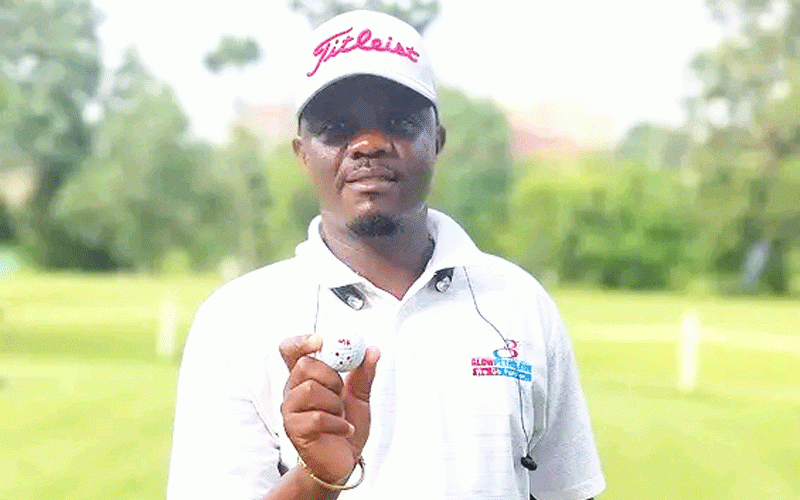
Non- golfers get puzzled when they see someone carrying a bag full of clubs (sticks). For fear of being exposed to one’s ignorance many do not ask for any explanation. Do not worry, I am with you. That is why I am making this effort to expose this sport to all. No more need to ask as I shall unveil that myth.
Before going any further, I need to define the following terms: golf club (golf stick); loft; and distance. A golf club is equipment that is used by a golfer to hit a ball in the game of golf. An iron club is a golf club that has a narrow metal head while a wood is a golf club which has got a long shaft and is used to hit long shots. It has a heavy iron or wooden head. Loft is the degree of angle of the golf club’s club face.
Distance refers to how far the ball will travel after it has been struck (hit). There is a strong a relationship between the loft of a club, and the distance the ball travels. In the modern era a maximum of 14 clubs should be carried in a player’s bag when he is playing in a competition. I am emphasising the words “in a competition” because you can carry any excess if you are not competing with others, or if you have excess clubs you want to go and try at the practice range, or if you are just playing on your own or with a friend. Only when it comes to playing in a competition with others are you restricted, and any breach results in penalties being imposed on you
Anyway, it is every beginner’s wish to play in a competition; hence we will be concentrating on the 14 clubs maximum. However, you will not be penalised if you are having less in your bag. But why are so many clubs needed? Why not use two or three clubs and do away with carrying golf bags, some of which are so big that whoever carries them need to be fit and should have a full stomach.
Each club should hit a specific distance. If you swing consistently and strike the ball at the sweet spot (as should be the case), you will quickly prove to yourself that the clubs are not the same when it comes to the distance each travels. There are two things to check when you take a club out of the bag and before using it. Many people curse themselves when their shots fail to get to the green only to realise that they will have underclubed and used a 7 iron where they should have used a 8 iron. So double check that the club you are about to use is the correct one for your distance.
The golf clubs are classified into two groups, Irons and Woods; irons — because they have metal heads; woods — which may have metal or wooden heads. However, not very long ago all woods had wooden heads. In a golfer’s bag with a typical set of clubs you would expect to find the following clubs; Woods — driver (1 wood), 3, 5; Irons — 3, 4, 5, 6, 7, 8, 9, pw, sw and putter. From 3 iron to sw (sand wedge) each has more loft than the previous and in turn should travel different distances in the same sequence with a 3 iron going further than a 4 iron in that order.
The difference in distance between one iron to the other except for wedges ranges between approximately 10-15 metres. The smaller the iron number, the lower the loft and the further the distance it travels compared to the one with higher loft. It therefore means that a 5 iron should hit a ball about 10-15 metres longer than a 6 iron. This gap between clubs should be consistent if you maintain consistency too with your swing. Here is a chart showing clubs, lofts and distances: use this as a guide.
Club Loft(%) Men (metres) Ladies (metres)Woods s.h – l.h s.h – l.hDriver 8 -12 200-250 140-2003-wood 14 -16 180-225 120-180 5-wood 19 -22 170-210 100-170Irons3-iron 20 -22 155-195 95-1554-iron 25 -27 145-180 85-1455-iron 28-31 135-165 75-1356-iron 32-35 125-155 65-1257-iron 36-39 115-145 60-1158-iron 40 -43 105-135 55-1059-iron 44 -47 95-125 50-95PW 48-50 80-110 45-80 SW 55-58 60-90 35-60PW-Pitching Wedge: SW- Sand Wedge: s.h- short hitter; l.h- long hitter
- Chamisa under fire over US$120K donation
- Mavhunga puts DeMbare into Chibuku quarterfinals
- Pension funds bet on Cabora Bassa oilfields
- Councils defy govt fire tender directive
Keep Reading
The distances above are a guide for amateur short hitters (s.h) up to long hitters(l.h). However, some amateurs can hit further. The professionals hit the balls much further than these. I need to emphasise that the actual distance differs from player to player and that each player should therefore go to the golf range and try all clubs to correctly establish how far he or she hits each club. I strongly advise all beginners to do so as you progress in your game.For any feedback/ comments and any assistance you may need contact the writer, Tavenganiswa Mabikacheche at The Centre for Training and Research Services on email: [email protected] or mobile no. 263712200922 /263772319612.











